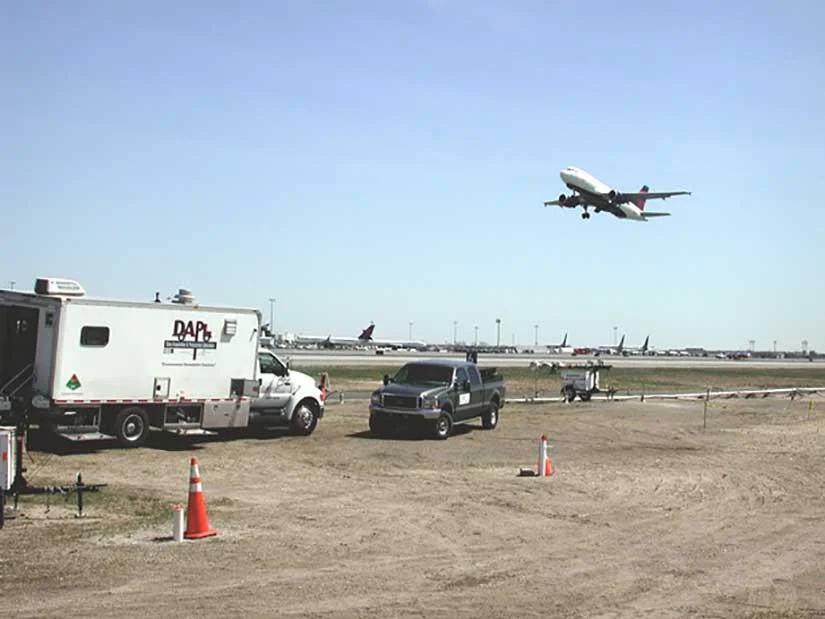Pipeline Release at Airport
Client Challenge
An underground petroleum pipeline release on the airside of one of the nation’s largest airports posed extensive challenges and risks. The airport, operated by the Port Authority of New York & New Jersey (PANYNJ), is situated along wetlands in a densely populated and industrialized area. Geological complexity includes hydraulically-dredged sediments placed on native silts and tidally-influenced groundwater. The release volume (over 300,000 gallons of gasoline) and four-acre areal distribution added to project complexity.
GES Solution
GES coordinated with the many stakeholders (including FAA, US Coast Guard, PANYNJ, and state regulators) regarding security, access, permitting, remediation, and reporting requirements. Initial response and subsequent site investigation and remediation activities were carefully planned and managed to maintain safety and to ensure that there was no disruption to airport operations. Work within the airside of the airport, including along an active runway, necessitated extensive permitting and work restrictions related to sensitive wetlands, mobile equipment, height, night work, fire prevention, and evacuation contingencies.
Upon receiving notification of the release, our client-specific rapid response program enabled immediate corrective action measures to mitigate any seepage along the shoreline. A series of investigations and pilot studies were conducted to evaluate and delineate vertical and horizontal soil and groundwater impacts, using tools including laser-induced fluorescence (LIF). Capture zone modeling and subsequent design of a hydraulic control and product recovery system were based on the results of aquifer pump tests. A tidal investigation was completed to understand the impact of tidal fluctuations on groundwater and product migration. DAPL, GES’ mobile enhanced remediation feasibility unit, was deployed to test the effectiveness of various technologies and optimize remedial design.
Client Value
GES’ innovative approach, using horizontal well technology, accelerated cleanup time and saved thousands of dollars compared with conventional vertical wells. LNAPL mobility studies helped to evaluate remedial progress and fine tune the solution over time. These included LNAPL and groundwater recovery systems using air sparge/soil vapor extraction (AS/SVE) technology, and in-situ chemical oxidation (ISCO) injection. Quarterly remediation optimization reviews were conducted to evaluate and accelerate site cleanup. GES field crews were on site 24/7 to implement immediate response measures and later to ensure safe operation and maintenance of the designed systems in this high-security location. The site has progressed through monitored natural attenuation (MNA) status to regulatory closure.

